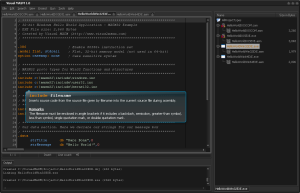I’ve been updating my reference implementation in the last few days. I’m actually using this reference implement in my own projects. You can download the latest version on my GitHub repo.
This is a complete .NET C# reference implementation to help you jump start a service oriented system running in a cloud environment such as Amazon’s EC2 or on-premis clusters.
This reference implementation shows you how to build a client and the server side. The client side is a sample WPF application that communicates via http REST requests using JSON payloads to the service side. Of course, you can use any type of client as long as the client can communicate via http and REST based JSON’s.
The service side is using a Web API 2 service layer that communicates to a central domain model. The service side demonstrates how to handle exceptions and edge cases and how to communicate failure to the client.
The persistence layer demonstrates the extreamly powerful provider pattern to store the domain objects into the following databases:
- db4o (an object database)
- Redis (a NoSQL database)
- SimpleDB (a NoSQL database)
- SQL Server (comming soon)
Please note that the entire system has no knowledge on how the objects are stored. All implementation details are in the individual providers listed above. This means that you can switch the persistence provider without having to recompile and therefore switch a running system from one persistence store to another.
I will try to create a sample SQL Server provider soon.
